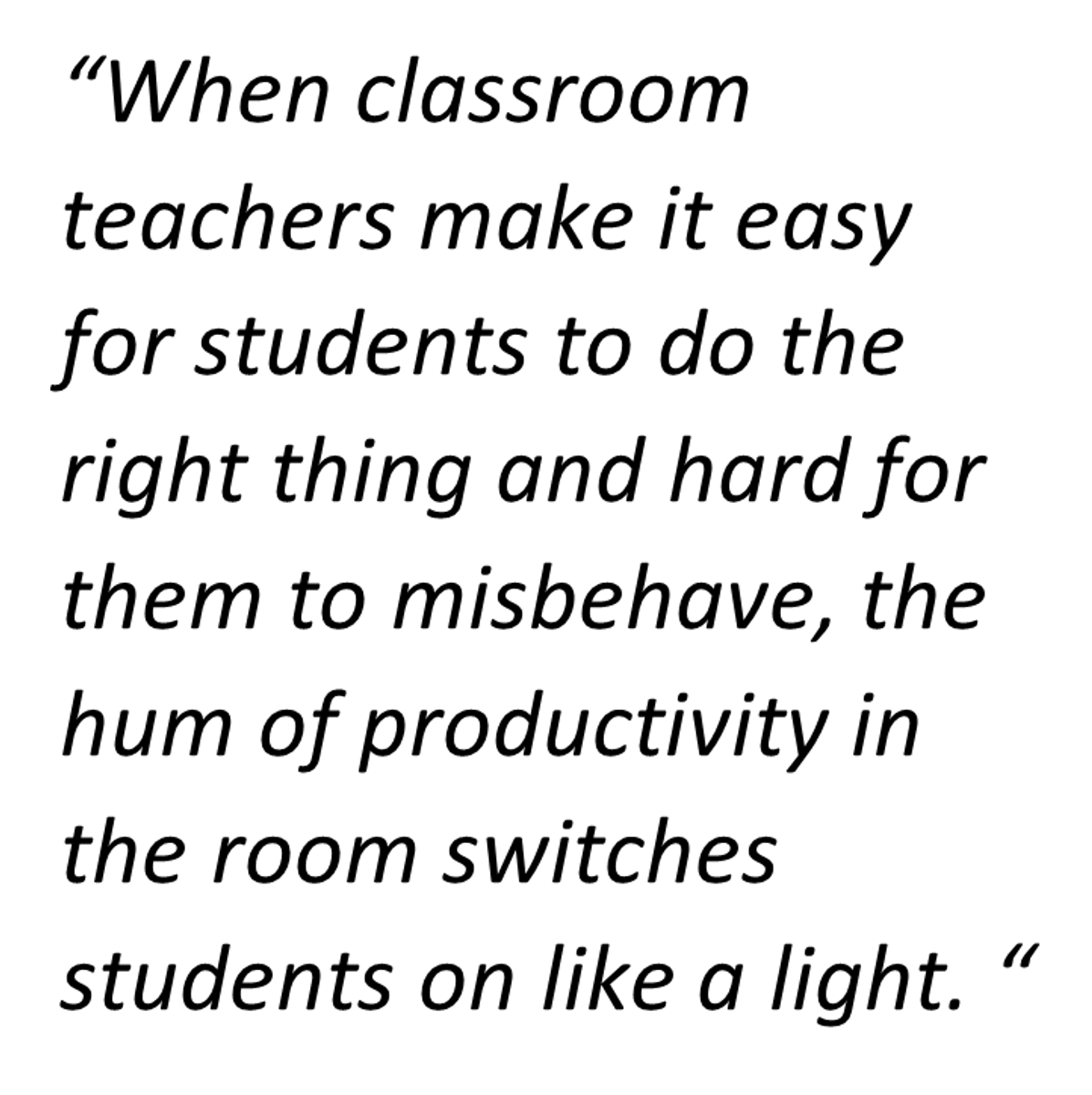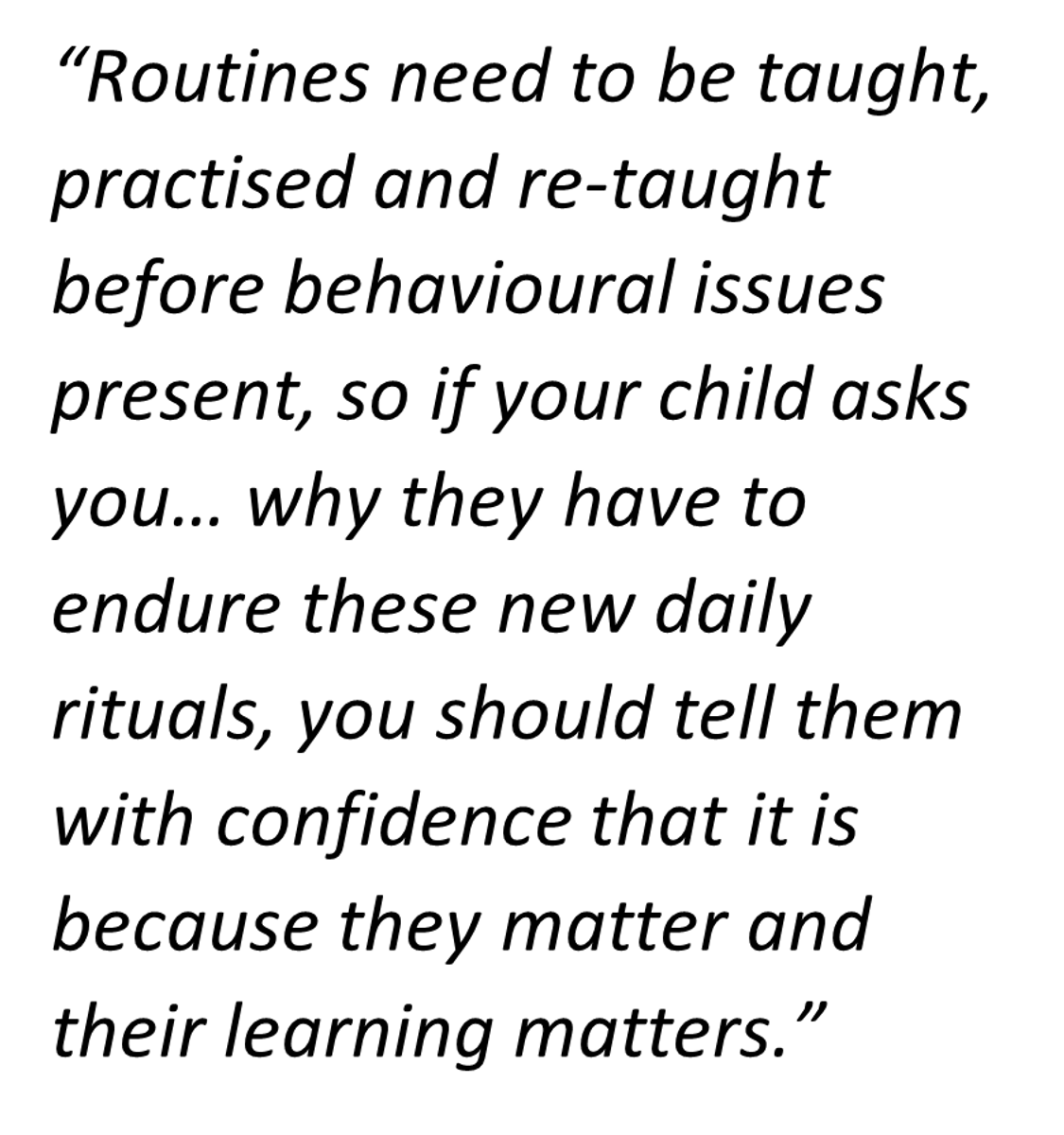Spotlight on Learning:
Classroom Culture

Spotlight on Learning:
Classroom Culture
Creating a physical environment and classroom atmosphere conducive to learning can have a significant impact on a student's academic and social potential.


In essence, when it comes to "running the room", experts such as Tom Bennett (Director and founder of researchED, UK) maintain that the key is to create routines and habits so that the norm is for students to behave in a way that lets them learn. When classroom teachers make it easy for students to do the right thing and hard for them to misbehave, the hum of productivity in the room switches students on like a light.
In the middle years of schooling, from Year 7 to Year 9, in particular, cognitive development is such that students sometimes behave like a colony of ants, following one another automatically or instictively, with even the best students not yet acting with autonomous intent, which tends to manifest in the later years of adolescence. A good example of this group mentality is a student who would never intend to drop a piece of litter automatically doing so if they see piles of rubbish in the playground. They see dropping litter as normalised and find themselves blindly following suit.
As adolescent Psychologist and friend of Girton Grammar, Dr Michael Carr-Gregg, maintains, "adults need to be the frontal cortex that teenagers lack." Carr-Gregg says that young people crave closeness, comfort, unconditional acceptance and the security that comes with a routine environment, even though they would rather walk over hot coals than admit this. Structure and firm boundaries - at home and school - contribute to this sense of security that teenagers need. It also helps young people develop their own moral compass and more intentional behaviour.
Schools are always looking for ways to optimise learning. Following the disruption to education caused by the COVID-19 pandemic in 2020, we are now putting the spotlight firmly back onto student wellbeing by focusing on creating positive routines and structures.


In the first instance, we are implementing some simple initiatives designed to help students transition effectively from the chaotic area outside of the classroom into the ordered atmosphere of the classroom. This allows teachers to quickly and easily segue into the content and pedagogy of their lesson.
Your child may have described to you classroom routines which include; lining up in an orderly way outside classrooms and entering only when permitted to do so by the teacher; standing quietly behind desks until greeted by the teacher who then asks them to sit; resetting the classroom and ensuring it is clean; standing up behind desks at the end of the class to formally and collectively end the learning session. In some instances, teachers may have chosen to implement pre-determined seating plans for students.
Routines need to be taught, practised, and re-taught before behavioural issues present. The trick is to get ahead of the behaviour. So, if your child asks you, with a sigh (and they might!), why they have to endure these new daily rituals, you should tell them with confidence that it is because they matter and their learning matters. You should explain to your child that every student has the right to be in a learning environment where they can achieve their personal best – academically and in a social-emotional capacity.


Many of these classroom rituals are already used by Girton teachers. We aim now to formally implement these positive routines and apply them consistently from Year 7 to Year 9 so that the patterns become normalised and automated for students. The classroom routines will be used as deemed necessary by individual teachers for students in Years 10 to 12.
These simple steps are part of the bigger tapestry of student wellbeing, including the current revision of the Student Behavioural Expectations policy, which will be launched later this year. Much work is being done on pedagogical initiatives, including further development of learning intentions and success criteria, which will also be implemented later in the year.
Girton is a school with a long history of a positive learning culture, nurtured over the years in a range of ways and supported by parents who are engaged in their child's educational journey. These latest initiatives are the next iteration in developing harmonious classroom culture based on the latest evidence and expert advice. Explicit routines are just one way to prevent behaviour problems from arising, and 2021 is the ideal time to make this our focus.
Dr Emma O’Rielly
Deputy Head